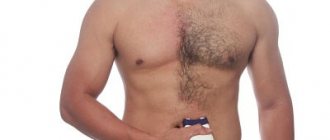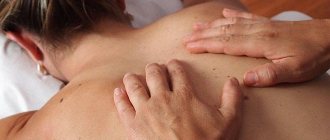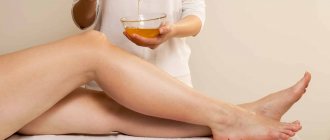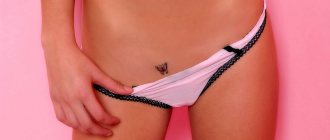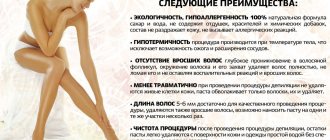Category: Epilation
Hair removal using wax or sugar is becoming a popular procedure. Dreaming of getting rid of excess hair on the body, girls and women use razors less and less, because this tool removes only the visible part of the hairs, and they grow back quickly.
Therefore, in order for the skin to please its owners with smoothness for as long as possible, they resort to either sugar or lipid hair removal. It is necessary to consider which is better - waxing or sugaring, and what are the advantages and disadvantages of these two methods.
Principles of operation of methods
Both hair removal methods allow everyone to get rid of excess hair on their arms, legs, armpits and bikini area for several weeks, since during these procedures the hair is removed along with the roots (bulbs).
Waxing, or waxing, is performed using a composition containing bee product, pine resin rosin, paraffin and natural oils. Its consistency can be hard (in the form of granules or briquettes) and soft (sold in jars or roller cassettes); strips with a sticky composition applied to them are widespread.
Before the hair removal procedure, hard wax is heated to +50°C so that it becomes viscous and melted, and then, after cooling to +40°C, it is applied to a small area of skin using a special spatula. The layer of composition should be thin and uniform. A paper strip is placed on top, pressing the hand to the body. The sticky substances contained in the wax penetrate under the skin under the influence of heat and, upon reaching the hair follicles, envelop them. You need to sharply pull the strip in the direction opposite to the hair growth, which will break out along with the roots.
The procedure using a hot composition is carried out in a cosmetology room.
Soft wax, unlike hard wax, does not need to be heated, which is why this type of hair removal is called cold. Ready-made strips with the composition purchased in the store are also not heated, but their temperature should not be lower than +20°C. The cold hair removal technique is otherwise no different from hot waxing. Sometimes wax strips can be applied to the skin several times if individual hairs remain in the area. Cold methods are easy to perform without the help of a cosmetologist at home.
After completing all types of procedures, the skin should be wiped with olive, coconut or lavender oil to remove wax residues, since it is not washed off with water. For two days after hair removal, you need to protect your skin from exposure to ultraviolet rays, do not sunbathe or go to the solarium to avoid inflammation of the epidermis or its pigmentation.
Although the method of sugar hair removal (sugaring) appeared in Russia recently, it, like wax, already has a whole army of fans. You need to know how sugaring differs from waxing and what they have in common.
The main difference is the epilation material. Removing vegetation from the body is done using sugar paste. It contains only natural ingredients: water, sugar and lemon juice. When comparing wax with sugaring, you need to know that masters apply sugar paste to the skin heated to a temperature of +37...+39°C, as in the hot waxing procedure. But, unlike hair removal with resins, the sugar composition is never used cold.
Otherwise, the principle of sugaring is similar to the waxing method. The heated paste is applied to the area with hair, hardens on it, turning into a cake, which is removed from the body with a sharp movement along with the hairs stuck to it. This method does not require paper strips. After the procedure, the remaining sticky paste is easily washed off with warm water.
Which method is better: step-by-step comparison
It is impossible to say which is more effective: waxing or sugaring, since the choice depends only on personal preferences. At the same time, the differences between sugaring and wax hair removal are insignificant, but they exist and are as follows:
- Traumaticity. Sugar paste is good for those who have delicate skin even in the roughest places. Depilation with sugaring brings more comfort. With this method, it is impossible to cause a burn, as can happen if you do waxing. Waxing may cause bruising and spider veins.
- Ingrown hairs. The unpleasant thing is those ingrown hairs that can form during waxing. Sugaring eliminates their appearance after 2-3 sessions.
- Soreness. Sensations during the procedure play an important role. With the help of sugaring, removal occurs along the hair growth line, so the process is almost painless. This is especially true for the bikini area. With the help of wax depilation, hair is removed against its growth, but you can make the procedure more comfortable - the higher the temperature of the mass, the less painful it is. When heated, the pores of the skin expand, which ensures comfortable hair removal. But you can overheat the mass and get burned.
- Price. Compared to laser hair removal and photoepilation, waxing hair removal is a fairly budget option. Sugaring will cost more if you do it in a salon. If you do it at home, it will be the cheapest.
- Speed. Waxing has the advantage of speed of the procedure, since during depilation a fairly large area is affected. But this causes pain. With sugaring, hair removal takes longer, but the procedure itself is not as painful.
- Purity. After waxing, clients may feel a slight stickiness in the treated area. This is due to the fact that wax tends to be difficult to wash off and leaves small traces. Sugaring paste can be easily removed with a simple damp cloth.
- If you have varicose veins, you should not use these methods. However, the method of depilation with sugar is more relevant, since the paste is heated by body temperature. If, nevertheless, the choice is made in favor of waxing, then you should use only the warm or cold method.
- Thanks to the soft technique during depilation with sugaring, you can go over the same area several times. This will not cause discomfort or damage to the skin, unlike waxing. If you wax one area several times, the risk of injury increases, since during the procedure not only the hair itself is captured, but also a piece of skin.
Important! For a deep bikini procedure, preference should be given to sugaring, since the skin in this area is very sensitive. Waxing can lead to severe pain.
Benefits of waxing/sugaring
You need to figure out what to choose - sugaring or wax. Many women find it difficult to choose between them, because both procedures are superior to each other in some respects. If you decide to remove excess hair from your body using sugar hair removal, know that its advantages are as follows:
- The composition for sugaring can be prepared at home, so, unlike wax, it will require less money.
- Thanks to the natural components included in the sugar paste, the skin is not subject to irritation and allergic reactions.
- Since hair during sugar hair removal is always pulled out in the direction of its natural growth, and not against it, as with the wax method, it does not break at the surface of the skin and does not grow into it.
- After removal of vegetation, the skin is easily and quickly cleansed.
- The risk of getting a burn to the epidermis during this procedure is small, because the temperature of the paste is low.
Waxing also has several advantages over sugaring:
- A mixture of paraffin, resins and wax can be applied to a large area of the skin, so the time spent on the procedure is much less than for sugar hair removal.
- The composition captures short-length hairs, and this circumstance allows you to remove unnecessary hair from one area of the body in 1 step. And if sugar paste is used instead of wax, hair is removed only the second or third time.
- With regular waxing, the hairs grow thinner, the hair becomes smaller and it becomes easier to get rid of it each time.
Thus, if you want to save time on the hair removal procedure, then you shouldn’t think long about the dilemma of what to use - waxing or sugaring; waxing will win here. If you care about the beauty and health of your skin, choose sugaring.
What is the difference between sugaring and waxing?
The quality and effectiveness of each hair removal method primarily depend on the skills of the specialist and strict adherence to the protocol. Both waxing (waxing) and sugaring are carried out using technology that has been proven over the years (and even centuries), which you need to have an idea about in order to draw any conclusions.
Sugaring technique
Sugaring is also called sugar hair removal, and all because during the session a product made on the basis of sugar is used - regular, cane, glucose or fructose. In appearance, it resembles caramel of varying thickness. A denser mass is used to remove hard hairs, a softer mass is used for thin and vellus hairs. The essence of the method is that warm caramel is applied to the skin with hairs against their growth, and is removed along with the growth along with unwanted hair. Thanks to the stickiness of caramel, it grabs the hairs well and, at the time of removal, pulls them along with the bulbs.
The main principle of sugaring is applying the paste AGAINST hair growth, and removing it ACCORDING to hair growth. This ensures minimal pain during the procedure.
You can apply and remove the paste using different techniques :
- manual - directly with hands wearing gloves or without gloves;
- bandage - apply sugar with a spatula or cartridge, apply a bandage (strip) on top, press and tear off the strip with your hand;
- spatula - the skin is smeared with paste using a spatula and the paste with hairs is rolled out with its help.
There are a number of combined professional techniques, but these three are considered basic.
Waxing technique
Waxing is a type of hair removal in which wax-based products are used to remove hair. The wax is heated to a liquid or creamy state and applied to the treatment area according to hair growth. The mass, like sugar, has good tenacity and comes into contact with the hairs. Apply a bandage strip on top of the wax layer and wait a few minutes for the product to set. Then the strip is torn off against the growth along with the unwanted hair and roots.
When waxing, the wax product is applied IN the direction of hair growth, and removed AGAINST the growth. This feature makes the technique more painful.
Depending on the operating temperature, 3 types of wax are used :
- Hot – heats up to 50–65 °C, does not require combination with strips. The most painless, but dangerous option is to overheat the product and leave a burn on the skin.
- Warm – operating temperature is 37–45 °C. Convenient for home use and treatment of large areas of the body, requires additional use of bandages.
- Cold - produced in the form of films or strips on which a thin wax layer is applied. The product is heated in the palms and applied to the hair removal area. The most convenient, but ineffective method, since it does not provide reliable adhesion to the hair.
Disadvantages of waxing/sugaring
Despite the advantages of both procedures, each of them has disadvantages, which should also be looked at carefully.
Disadvantages of waxing:
- Sometimes the hot wax method results in skin burns, although professionals try to prevent this from happening.
- In people sensitive to irritants, the components of the composition cause allergies. But lemon juice contained in sugar paste can also cause skin irritation, so the difference with sugaring in this case is insignificant.
- It takes a long time to remove wax residues from the skin with oils.
Cons of sugar hair removal:
- Doesn't remove all hairs the first time.
- The procedure is a lengthy process as one piece of paste can only cover a small area.
- Sugar, having firmly adhered to the skin, can remove not only hair, but, compared to wax, it can destroy the cellular layer of the epidermis more strongly.
- The process of working with paste in the armpits and bikini area is more difficult.
It is necessary to take into account all the nuances of both methods before resorting to any of them.
Comparison of prices for sugar depilation and waxing
Both procedures differ in price. The cost of waxing for a highly qualified specialist and for an ordinary one will be significantly different; let’s take the average price of a Moscow cosmetologist:
| Zones | Waxing | Sugaring |
| Above the upper lip | 5 $ | 5 $ |
| Armpits | 8 $ | 10 $ |
| Arms (to the elbow) | 9 $ | 10 $ |
| Legs (hips + lower legs) | 21 $ | 35 $ |
| Bikini deep | 22 $ | 25 $ |
| Back | from 9 $ | from 6 $ |
Thus, we see the price differences between sugar and wax depilation. The first procedure takes longer, since the treatment of one area is repeated several times until the hair is completely removed, its price is slightly higher, but so is its effectiveness.
Despite all the pros and cons of sugaring or waxing, each procedure has its fans. Only after trying both methods can you determine which is suitable for yourself.
Contraindications for waxing/sugaring
Every person who wants to get rid of excess hair using sugar or wax should be aware that not everyone is allowed to carry out such a procedure as hair removal.
People with diabetes and HIV-infected people should not remove body hair, as an infection can easily be introduced under the skin, which will cause a purulent-inflammatory process. Even after superficial trauma by wax or sugar, the skin of people with these diseases recovers slowly. Epilation is not recommended for pregnant women.
Since sugaring and waxing are accompanied by unpleasant sensations, they should not be done by people with a low pain threshold. For the same reason, women who suffer from coronary heart disease and hypertension or are in the second half of the menstrual cycle, when the pain is felt more strongly, should avoid waxing hair and using sugar paste.
Pros and cons of waxing
Removing skin hair using waxing has long been considered the best way to remove hair, since its advantages are undeniable:
- Convenient and fast - especially after home cassette epilators that operate on electricity and easily heat wax to the desired temperature have become available on the market. A convenient roller applicator allows you to quickly apply hot wax to the skin, and wax strips can also be quickly applied on top. Hair removal occurs in one movement.
- Long-lasting results - hairs are removed along with the root, so the skin remains smooth for 3-4 weeks.
- Safety – it is impossible to get hurt during wax hair removal, since no sharp or dangerous objects are used during the procedure, only wax and paper.
- There are no contraindications - absolutely all women can use wax.
Disadvantages of using wax:
- Ingrown hairs are the main problem with wax use. This is due to the fact that hairs are removed against growth. Some of them break or bend. Subsequently they grow and inflammation occurs.
- Pain – Waxing is a fairly painful procedure, especially on sensitive areas.
- Skin irritations – hot wax can sometimes cause irritation or allergic reactions. If the first goes away quickly enough, then the second indicates that this method is not suitable for you.
- Remaining hairs – waxing is done only once on one area of the skin. If after the strip has been removed there is still hair left, it can only be removed with tweezers, which takes time. If you carry out the procedure on the same area a second time, you can get severe irritation on the skin or even a burn.
Possible consequences of waxing/sugaring
In addition to infectious processes caused by microbes and viruses entering the skin (herpes, Staphylococcus aureus, hepatitis) and allergic reactions that irritate the epidermis, wax and sugar procedures can lead to the following consequences:
- If a person takes antibiotics or oral contraceptives, their skin may become sensitive. As a result, after hair removal, itching or swelling of the body area will appear.
- In people with papillomas and moles in the bikini area, sugaring and the wax method can contribute to the degeneration of benign formations into malignant ones if they are damaged by the paste and composition.
- If epilation is carried out incorrectly, bruises and bruises appear in areas with removed vegetation.
- The most common problem after poor-quality waxing and sugaring is ingrown hairs under the skin. Regular use of scrubs helps reduce its likelihood.
If you have no dangerous diseases or contraindications and hair removal is done by a professional under sterile conditions, then you don’t have to worry about the quality of the sugar or wax procedure and its safety for health.
Sugaring or waxing: what do the procedures have in common?
Sugaring or waxing (depilation) – which procedure is preferable? Almost all clients of cosmetologists think about this question. Some people choose depilation with sugar paste, while others believe that there is nothing better and more reliable than wax depilation. It is interesting that the vast majority make their choice intuitively, without delving into the essence of both procedures and, as practice shows, there are almost no mistakes, because sugaring or waxing are equally effective procedures that have a lot in common :
- Same readings. Sugaring and waxing are done to get rid of unwanted hair, and the procedures are used with equal success by men and women. Depilation with wax and sugar is suitable for patients who cannot undergo photoepilation or laser hair removal.
- The principle of hair removal. It doesn’t matter what to use - sugaring or wax, both methods ensure hair removal from the root, that is, the hair shafts are not broken off or cut off, as when shaving, but are pulled out, without compromising the integrity of the skin. True, the follicle itself is not damaged, which means that the growth cells retain the ability to produce healthy and strong hair shafts.
- The procedure is simple and does not require special equipment; all you need is a little paste and the skillful hands of a cosmetologist. By the way, treating the same area with both sugaring and waxing takes the same time, depending only on the area that needs to be cleared of hair and on the professional skills of the cosmetologist performing the procedure.
- Treatment of any zones. It doesn’t matter whether the client chooses sugaring or waxing - both methods are successfully used both on the face and in any areas of the body, right down to the perineum and the area between the buttocks.
- Beneficial effect on the skin. Sugaring and waxing act on the skin as a peeling film, that is, together with the paste, not only hairs are removed, but also dead skin scales, sebaceous plugs and dust particles.
- The skin remains smooth for 2-4 weeks . Whatever technique the cosmetologist uses - sugaring or waxing - he will not be able to increase this period. There is an opinion that after the procedure, the hairs lose their rigidity and color, gradually become soft and pale, and therefore almost invisible. This may be the case, but not always. I would like to remind you once again that during sugaring or waxing there is no destructive effect on growth cells, which means there is no reason to believe that the hair shaft will be weaker than it was before the procedure. If you take a break between sugaring or waxing procedures, then after 2-3 months the hair will be restored to its original form.
- General contraindications. Both methods of hair removal with sticky pastes have the same contraindications. You can safely choose sugaring or waxing if you have implants (including dental ones) and pacemakers; in addition, the results of the procedures do not depend on hair color and skin phototype. A fresh tan is also not a contraindication (if there is no pronounced redness of the skin).
- There is no need to shave your hair before the procedure. In order for the paste to “grab” the hair shaft, its length must be at least five millimeters.
- The procedures are carried out according to the same scheme : the paste is brought to a creamy state, then applied to the skin in the treatment area, and after it hardens, it is removed with jerks parallel to the surface of the skin. Post-epilation care is also the same and consists of wearing loose clothing and using post-epilation creams.
- Home treatments are possible. Sugaring or waxing (depilation) can be performed independently by purchasing the appropriate cosmetics.
What's more expensive?
In order not to harm their health with poor-quality and inept hair removal at home, people prefer to turn to professionals. A method using wax (cold or hot), performed in a cosmetology salon, will cost less than sugaring. The price also depends on what area of the body the hair removal will be performed on. The most expensive procedure is for the legs, the cheapest is for the armpit area.
Having studied all the pros and cons of waxing and sugaring, each woman will choose the method that will be best for her. Both procedures have a large number of supporters, because they make the skin smooth for a long time.
Waxing (waxing)
This type of depilation is performed using heated wax or special wax strips. The sticky mass holds the hairs and removes them from the roots. Wax happens:
- Hot – used by professional cosmetologists in salons. Heats the skin, ensures effective hair removal with less pain. Suitable for coarse hair. But when using it there is a risk of getting burned. For varicose veins and spider veins, this remedy is contraindicated.
- Warm – suitable for independent use at home. Its operating temperature is up to 45°C, but this product does not always cope with coarse hair.
- Cold - wax strips that are heated in the hands, applied to areas of the body along the hair growth and torn off with one sharp movement in the opposite direction. They are very convenient and easy to use, but do not always provide absolute smoothness to the skin.
Wax or sugaring: reviews
As methods of combating unnecessary vegetation are popularized, each of them finds its fans and admirers.
How sugaring is done: execution technology
There are several ways to perform sugar depilation - manual, bandage and with application.
Manual - is a classic type of depilation that is done manually. This method of hair removal requires a lot of experience and professionalism.
- Prepare the pasta by preheating it to 35-40°C. Then prepare the skin area, wipe with a degreaser and apply talcum powder to help the paste grip the hairs better.
- Take a ball of paste and knead it in your hands, then apply an even layer to the skin against hair growth. Apply the paste using your index, middle and ring fingers. It is very important to apply the paste parallel to the skin area and keep your hand perpendicular.
- With a slight movement of your hand, pull the paste exactly in the direction of hair growth. Then do the same movements with other areas of the skin.
depilation with application is performed using the same technique as the classic method, but the application time is longer, which allows the substance to penetrate deep into the follicle and better capture it. This method creates a kind of mask on the dermis, which is why it is called application. This method is used for people with excessive sweating and during periods of high humidity.
- Warm up the herbal paste and prepare the skin for the procedure. Take the ball and warm it in your hand.
- Apply a ball of sugar onto the skin in an even layer against hair growth and leave for 1-2 minutes.
- After a couple of minutes, with a slight movement of your hand, pull back the layer along the hair growth. Treat the remaining areas in the same order.
Bandage technique is performed quite quickly compared to the classical method and is suitable for hair longer than 4 mm. This method uses more product than the manual method. But it fights hair more effectively in hard-to-reach places.
- Prepare the skin area and heat the paste to the required temperature.
- Mash a piece of sugar in your hand and apply it to the skin in an even layer against hair growth. Then apply a paper or cloth napkin (bandage) over the phytopaste.
- Pull the bandage parallel to the skin along the hair growth.
- To relieve pain or bright redness, touch the area with your fingertips, gently tapping the treated area.
For different climatic conditions it is necessary to use paste of different densities. For hotter weather, choose a high-density pasta. And in cold conditions - medium and low density.
